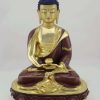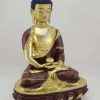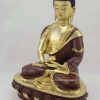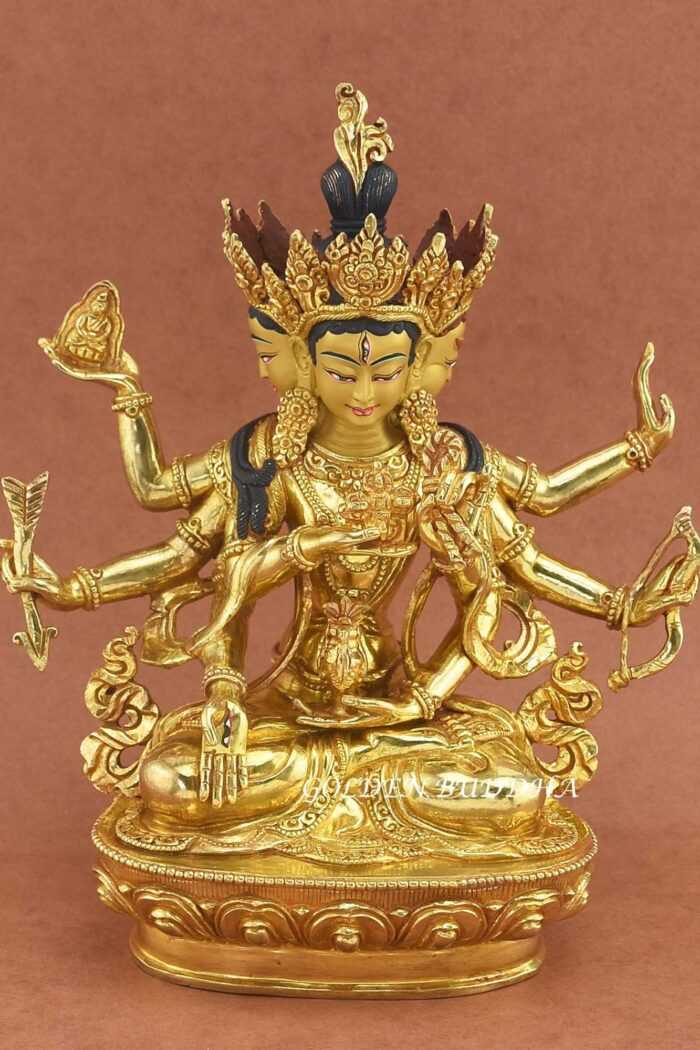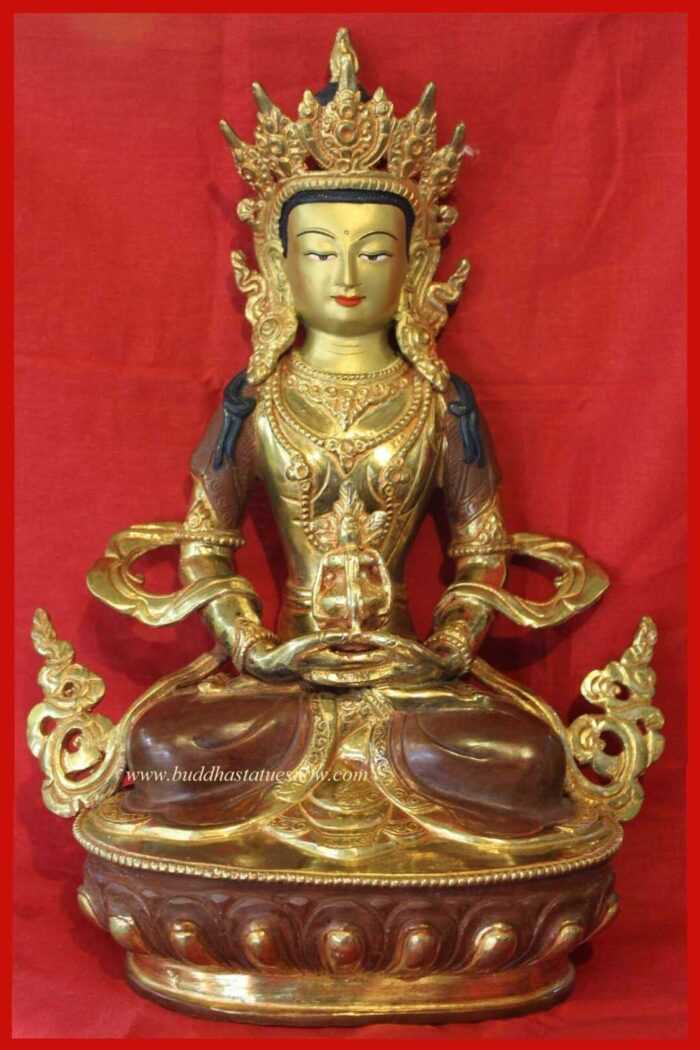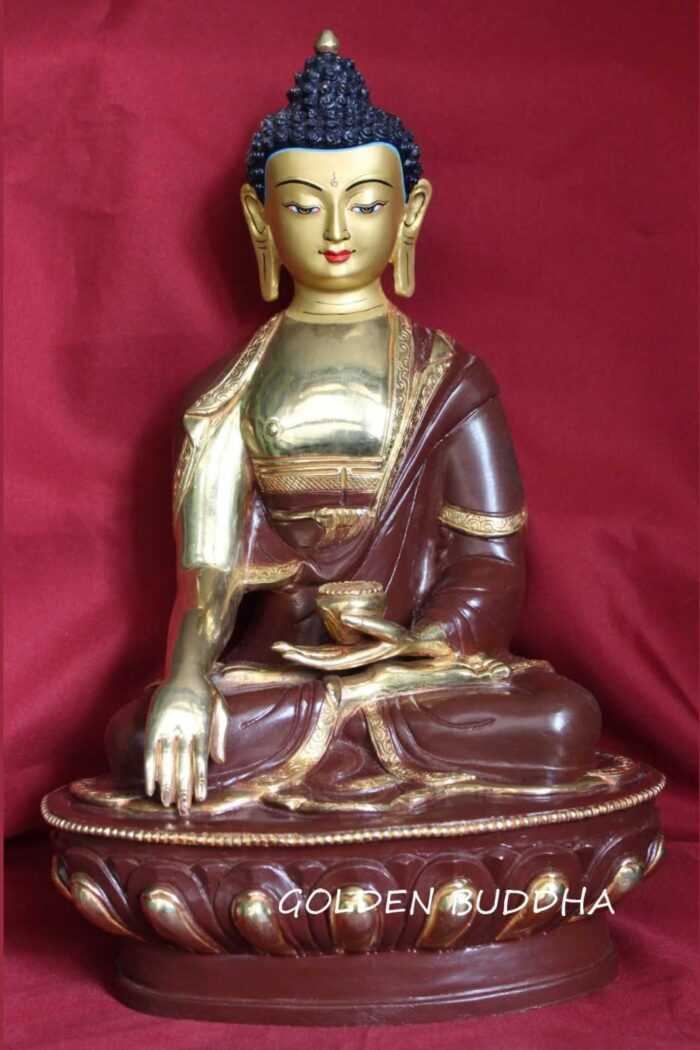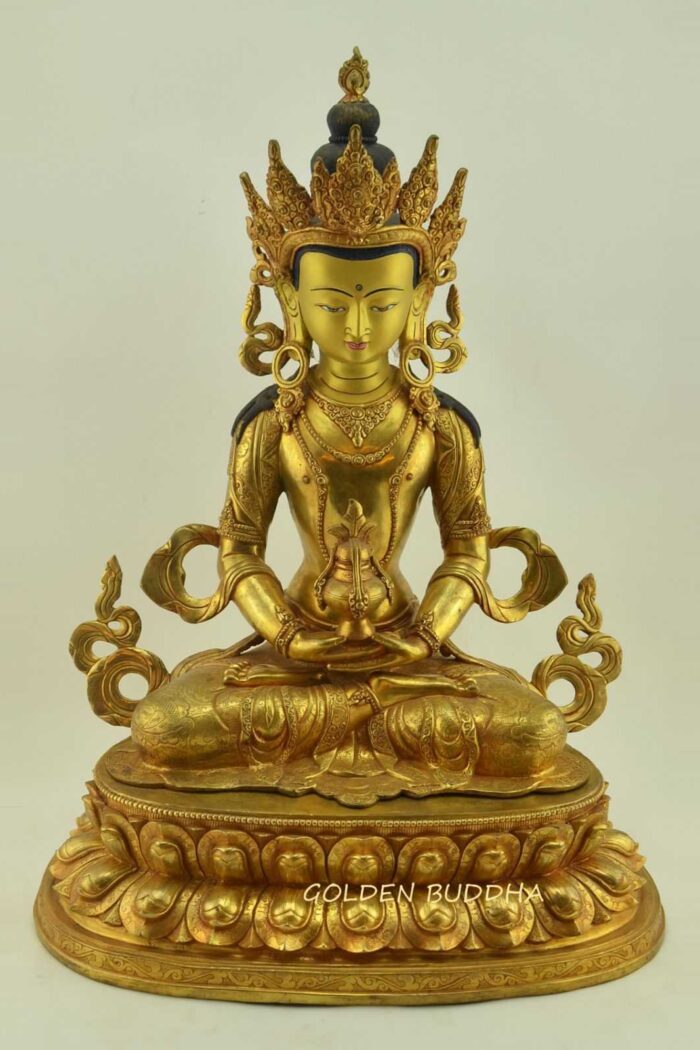This Amida Buddha statue is depicted in a brilliant red robe. Additionally, he is featured using the Dhyana mudra with the alms bowl resting on his right palm. The Dhyana mudra is also known as the meditation mudra. This venerable mudra is used by Buddhists in order to enhance meditation.
Although the alms bowl is not required for the Dhyana mudra, it is a common feature included with our Amida Buddha statues. The alms bowl is very significant in Buddhism because it is used by monks to collect alms. Additionally, the alms bowl holds 3 nectars which will eliminate the 3 poisons – ignorance, hatred and attachment.
The Origins of our Amida Buddha Statue
Amida Buddha originally existed for many thousands of years as a bodhisattva named Dharmakara. Dharmakara had made a vow to forgo accepting Buddhahood until he could have his own pure land. Therefore, it was necessary to be reincarnated thousands of times to accumulate an infinite amount of merit. As a result, he fulfilled his vow and has a pure land called Sukhavati.
In order to enter Sukhavati devotees are required to say the name of Amida or recite the mantra 10 times. Mantra recitations in front of an Amida Buddha statue may ensure that a devotee will be well received in Sukhavati. Click here to learn more about Amida Buddha.



